 Facebook
Facebook
 X
X
 Instagram
Instagram
 TikTok
TikTok
 Youtube
Youtube
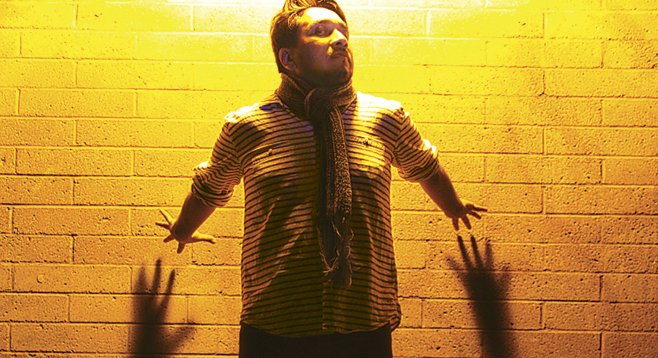
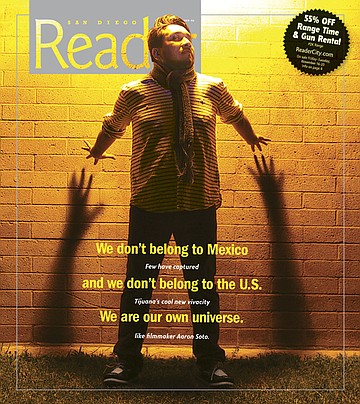
Few have captured Tijuana’s cool new vivacity as perceptively as Aaron Soto, a 40-year-old filmmaker raised in the rural outskirts of what was once “the world’s most visited city.”
Sharing his Escandalos Productions trademark with filmmaker Cathy Alberich and musician Edgar Guerra, Soto combines the occult imagery of Alejandro Jodorowsky with the lethal-babe factor of Richard Kern, along with elements of b-movies, horror, cyberpunk, surrealism, and a touch of Mexican mysticism. It’s a dissociative aesthetic that is distinctly tijuanense.
Soto’s work began to gain traction with his 2001 short Omega Shell, a cyberpunk-acid western (shot on a $200 budget) that became the first Tijuana short film to garner attention on the international-festival circuit.
Three years later, Soto removed his fantastical lens to create what would be his breakout piece — 33 1/3 — a 16-minute film about a record enthusiast; it went on to win awards across Mexico.
These days, when he’s not working as a coordinator for the Mexican edition of Canadian horror magazine Rue Morgue, he’s programming Mexico’s leading horror-film festival, Feratum Film Fest, and making music videos for transborder artists such as the Electric Healing Sound, Inkjet, Dancing Strangers, Shantelle, Dani Shivers, Silent Lune, Orlando, and Murcof (ex Nortec Collective).
In anticipation of his second feature film, a horror movie based in Tijuana, Soto talks to the Reader about zonkeys, VHS, and one unique border town’s violent coming of age.
Chad Deal: I was recently reading a story about [TJ indie jazz band] Madame Ur y Sus Hombres, and the article made a point of stating how unusual it was for a Tijuana artist to never mention the city in their work. Do you think Tijuana pride is prevalent and/or important? Do you have it? How does it come through in your films?
Aaron Soto: I don’t think it’s a pride thing. We’re loud in anything we do. There’s nothing discreet or quiet about Tijuana. We are the town best known for the “lady and the donkey” show. Over-the-topness surrounds us. I think it’s very simple. We were destined to be ignored by our own country, so we scream to get some attention. For many, this could come out as pretension or some kind of pride, but it’s a way to confirm our identity. We don’t belong to Mexico, and we don’t belong to the U.S. We’re our own universe: Tijuana. I don’t feel this way anymore, but I can understand that feeling.
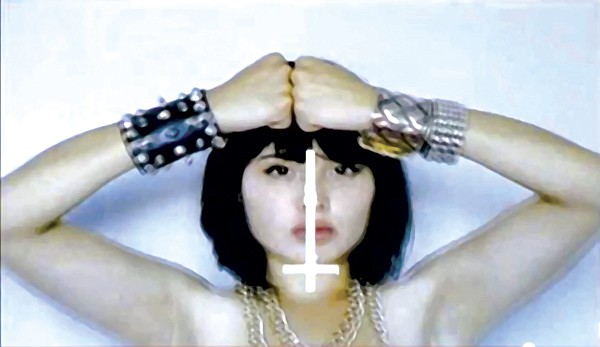
I made reference to the city in my work because, to this day, I haven’t seen any film treat Tijuana the way I see it. TJ isn’t just a tourist attraction or “the happiest place on Earth.” I find it ridiculous to walk downtown and still see a donkey painted as a zebra. TJ is like any other provincial city in Mexico. The difference is the way it makes you feel. The chance to be creative from both sides of the horizon is very exciting, and people can project that energy.
The reason I put that title of “Tijuana” in the “Unámonos” [by Shantelle] video is because, if I don’t let you know, you will never find out. It’s not what you expect from TJ. There’s no border reference or hip cowboys in the video.
I love the city, and it inspired me to be who I am, but there’s nothing that inspired me more than to see a new generation of artists fighting for the city. It’s overwhelming. I’m really grateful to have the chance to be a small part of that. Reality is cooler than fiction. I hope someday I can make Tijuana: The Motion Picture.
CD: Occult imagery is a common theme in your videos. In what ways do Mexican folklore and mysticism inform that aesthetic, and where else are you drawing these ideas from?
AS: Well, early in life I discovered El Topo: A Book of the Film in my father’s library. I was, like, seven years old and didn’t understand a single word, but I fell in love with the images. It was very hypnotic. My father was kind of like a con man from Mexico City — one of those con men that are very cultivated and have an adventurous life. He was a red-note [violent-crime] journalist who studied film and theater. He didn’t want to belong to the system, so he stayed on what you can call the wild side of the golden age of Mexican cinema and radio. You know what I mean? He smoked weed with comedy legend Tin Tan, and he even attended film class, with [Spanish surrealist] Luis Buñuel as his teacher.
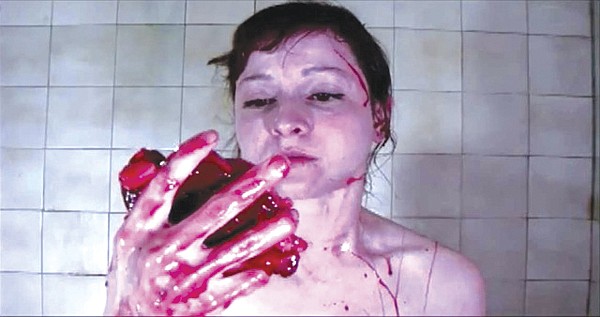
So, even though he wasn’t all serious about art, when he flew to Tijuana, he was one of the first people that brought all that knowledge and culture from Mexico City. Imagine all those stories about taking classes with Buñuel and attending premieres of those crazy Jodorowsky films — regular stories at dinner — and I was only seven years old.
I guess I developed a taste for the unusual. Plus, it was the late ’70s, and my parents were into metaphysics and all that crazy New Age shit. It was normal for me to think as a surrealist, but it was the geography that made me want to dream and create my own fantasies.
For most people, downtown Tijuana was the essence of the city. All the business pioneers and first families were raised in the north area, but not my family. My grandpa was a local farmer. He owned land south of the city, almost outside of the city, so my main playground was empty lots and faraway hills. The rest of the city was a mystery to me, and I loved that feeling. You know those small-town stories where the kid wants to leave the town to explore the big city? Not me. I wanted to stay there and explore the esoteric side of rural life.
CD: What films did you watch as a kid that fed into your approach to filmmaking now?
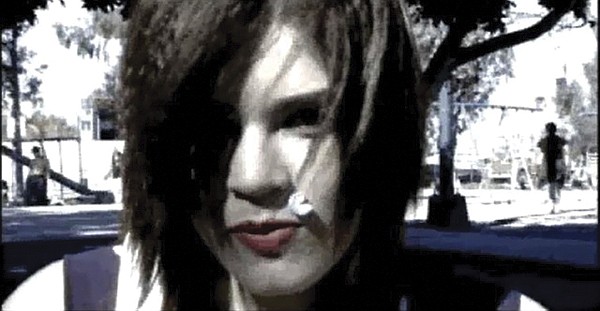
AS: I didn’t see a Buñuel or Jodorowsky film until the late ’80s, but I did watch ’70s Mexican TV, stuff like El Chapulín Colorado and El Santo films. Back then, Mexican TV was bizarre and creative — maybe a little twisted. But I was a kid of the video stores, especially mom-and-pop video stores. I could watch Star Wars or an Indiana Jones film in theaters, but on video, I could discover the Italian horror films of the ’70s and ’80s, like Fulci and Argento, or American indie stuff like The Evil Dead, or Canadian stuff like The Brood.
Video was awesome. It was something new and very exciting. It was the most intimate experience between you and the movies. I mean, you can rewind, pause, and play it again, so my main goal in renting was to learn — to see the stuff that no one wanted to play at the movies or on TV. Video stores were my film school. When everybody was talking about Rocky II or Gremlins, I was exploring Last House from the Left or The Texas Chainsaw Massacre for the very first time.
CD: I understand the creator of Rue Morgue was born and raised in Tijuana. Is that a coincidence, or is there a tradition of horror culture there?
AS: There is something about Tijuana that makes us want to be aggressive and furious in every way. I’m not talking just about cinema and arts…everything: the way we live, the way we eat, the way we worship something.
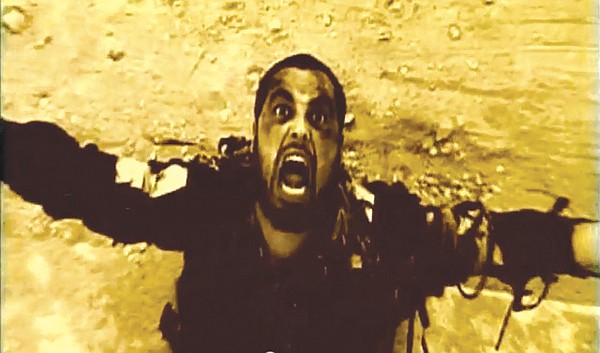
I remember back in the ’80s, the whole Smiths/Morrissey trend. People were really thinking about killing themselves or being depressed. How can you relate to a British white dude with totally different values? [Laughs]. But it is because of the desire to be part of something, wanting to belong. Because, for a while, we never fit into the country’s traditions and values, so we searched for a cultural identity. Mix that with being a border town — the weak part of the border town — and, boom! You got yourself a third-world city that is very self-conscious, but very ignored at the same time. So, yeah, it’s all frustration, and frustration could lead to violence and chaos.
But what happens if you put that feeling outside the city, in the right place at the right time? Violence and chaos in real life aren’t cool at all, but as a state of mind it could lead to something good, something unique, like the punk movement, and I guess that’s what happened to Rodrigo [Gudiño] from Rue Morgue. He is a very methodical man, but he can’t deny the carretera escenica (the scenic road) influence in his life. He saw his first accident on that road to Playas de Tijuana. The gore haunted him for many years, and he ended up creating the biggest horror-film magazine of the 2000s. It’s no coincidence. The cliché is true. I’ve been robbed a couple of times with a gun to my head, but I can’t deny I’ve been curious about slowing down at an accident and trying to catch a glimpse of gore.
Frustration was the essence of the underground culture. There wasn’t any true horror tradition in the country’s mainstream for many years. Guillermo del Toro [the Mexican director of Hellboy and Pan’s Labyrinth] was an exception, but if you look at the themes and ideas of Mexican cinema between 1988 and 1998, most of it was dull and full of academic shit. There wasn’t any room for genre films. But in Tijuana, we were doing serial-killer films, zombie films, cyberpunk films, ghost films, fantasies, etc. So I guess horror films became the new punk, and Guillermo del Toro was like our David Bowie — the only mainstream dude that we love! [Laughs]. Plus, we have a tradition of b-movie companies. Baja Films could be the Full Moon Productions of Mexico.
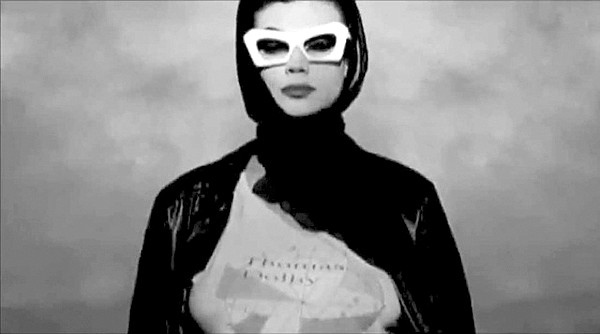
The main reason I said that Tijuana’s real cinema is about horror and the fantastic is because we do not identify ourselves with the reality of Mexico. We create our own Mexico through movies, music, photography, etc. Local horror filmmakers do not make horror ugly. Our films are not about the horror of real life; our horror is about liberation, about trying to know each other. And we are still searching.
Today, there is no underground anymore, and horror culture is established across the country, but there is a new breed of aggressiveness and anger in the city. Ego is a big part of it, as well as self-indulgence. And I think that is really cool, because those characteristics maintain a bizarre and freakish side to the city, and we need that. Tijuana should stay raw and eccentric. That’s the essence of its art and culture...you know what I mean? Maybe we can do our own Tijuana Chainsaw Massacre film, but at the same time, our own Liquid Sky.
CD: What is your camera of choice, and why?
AS: I’m definitely from the digital generation. I come from the generation that used Final Cut Pro for the very first time, but I feel comfortable with any format. I own a Canon 6D, but high-resolution is not what drives me. In fact, I hate that almost every HD indie project looks the same. Do not get me wrong — I love HD, but it makes us lazier. That’s why I still use my regular Mini DV Cam from Panasonic (DVX100), or even my VHS camcorder. I always force myself to work under other conditions than the crystal-clear HD.

By the way, VHS is the new Super 8. Contrary to what people think, it’s beautiful, and it will never go away.
CD: Do you approach your music videos differently from your short films?
AS: Good question, but it is no different for me. I listen to the music and let my subconscious take me. If an image from my subconscious says that something is right, it is right!
But, again, I come from the MTV generation — the good MTV from the early ’80s. I was a music-video freak. I taped everything. I watched everything. I was so obsessed that I became kind of like an expert on the matter, so I learned from the pioneers, like Michael Nesmith and Godley & Cream. They invented the art of the music video. Their stuff wasn’t just about the cool, or style, it was about the perfect combination of music and image.
Music videos aren’t movies or paintings — it’s a totally different form. Just take a look at the work of Jean-Baptiste Mondino or Mark Romanek. Their approach to music video is very instinctive. I identify with that. Sometimes a music note will ask for a specific image. There’s no way you should not follow your instinct.
CD: The occult aesthetic has been coming up a lot in the past few years (I’m thinking of the Tenant’s “Mystery Mountain,” El Guincho’s “Bombay,” Destroyer’s “Kaputt,” and your “Unámonos” video.) Where is all this coming from, and why is the imagery so captivating?
AS: I guess all those esoteric films from the ’70s needed to come back. Filmmakers like Jean Rollin and Jess [Jesús] Franco were really underrated. Ken Russell, man — the satanic films. I think it was a return to nature. In the late ’90s, music videos were so over-produced. Every video wanted to be epic, smart, and intense. The Radiohead syndrome. But today it’s about going back to basics.
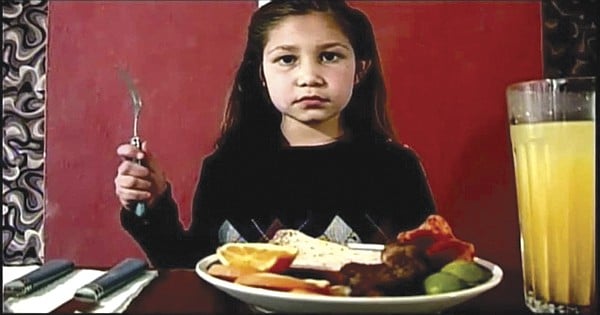
It’s cool that you mentioned Polanski [Soto thought I was referencing Polanski’s filmThe Tenant, rather than the band of that name], because his films represent the intensity of nature. There’s no pretension, just an exploration of the power of the mind. Witchcraft and rituals are based on that side of nature — a force that will work if you really believe, and I think we’re living in a time of believing. That’s why there are so many videos with that feel. I treat my videos as rituals because I want to share a therapeutic effect with the audience, if they believe.
The Shantelle video “Unámonos” was made under that concept. Many compare the video to the El Guincho video made by Canada Films. I love their work. It is full of cult-film references. But my main inspiration was Jean-Paul Goude’s “Slave to the Rhythm,” by Grace Jones — a video based on experimental artists like Stan Brakhage, Bruce Corner, and Kenneth Anger. They might be the real pioneers of music video. They explored visual texture. They explored the image of sound. I really relate to that. “Unámonos” was the perfect song to do it. A few seconds after I heard that track, all these images came to my mind. I went home, did a storyboard, and never thought twice about it.



Few have captured Tijuana’s cool new vivacity as perceptively as Aaron Soto, a 40-year-old filmmaker raised in the rural outskirts of what was once “the world’s most visited city.”
Sharing his Escandalos Productions trademark with filmmaker Cathy Alberich and musician Edgar Guerra, Soto combines the occult imagery of Alejandro Jodorowsky with the lethal-babe factor of Richard Kern, along with elements of b-movies, horror, cyberpunk, surrealism, and a touch of Mexican mysticism. It’s a dissociative aesthetic that is distinctly tijuanense.
Soto’s work began to gain traction with his 2001 short Omega Shell, a cyberpunk-acid western (shot on a $200 budget) that became the first Tijuana short film to garner attention on the international-festival circuit.
Three years later, Soto removed his fantastical lens to create what would be his breakout piece — 33 1/3 — a 16-minute film about a record enthusiast; it went on to win awards across Mexico.
These days, when he’s not working as a coordinator for the Mexican edition of Canadian horror magazine Rue Morgue, he’s programming Mexico’s leading horror-film festival, Feratum Film Fest, and making music videos for transborder artists such as the Electric Healing Sound, Inkjet, Dancing Strangers, Shantelle, Dani Shivers, Silent Lune, Orlando, and Murcof (ex Nortec Collective).
In anticipation of his second feature film, a horror movie based in Tijuana, Soto talks to the Reader about zonkeys, VHS, and one unique border town’s violent coming of age.
Chad Deal: I was recently reading a story about [TJ indie jazz band] Madame Ur y Sus Hombres, and the article made a point of stating how unusual it was for a Tijuana artist to never mention the city in their work. Do you think Tijuana pride is prevalent and/or important? Do you have it? How does it come through in your films?
Aaron Soto: I don’t think it’s a pride thing. We’re loud in anything we do. There’s nothing discreet or quiet about Tijuana. We are the town best known for the “lady and the donkey” show. Over-the-topness surrounds us. I think it’s very simple. We were destined to be ignored by our own country, so we scream to get some attention. For many, this could come out as pretension or some kind of pride, but it’s a way to confirm our identity. We don’t belong to Mexico, and we don’t belong to the U.S. We’re our own universe: Tijuana. I don’t feel this way anymore, but I can understand that feeling.

I made reference to the city in my work because, to this day, I haven’t seen any film treat Tijuana the way I see it. TJ isn’t just a tourist attraction or “the happiest place on Earth.” I find it ridiculous to walk downtown and still see a donkey painted as a zebra. TJ is like any other provincial city in Mexico. The difference is the way it makes you feel. The chance to be creative from both sides of the horizon is very exciting, and people can project that energy.
The reason I put that title of “Tijuana” in the “Unámonos” [by Shantelle] video is because, if I don’t let you know, you will never find out. It’s not what you expect from TJ. There’s no border reference or hip cowboys in the video.
I love the city, and it inspired me to be who I am, but there’s nothing that inspired me more than to see a new generation of artists fighting for the city. It’s overwhelming. I’m really grateful to have the chance to be a small part of that. Reality is cooler than fiction. I hope someday I can make Tijuana: The Motion Picture.
CD: Occult imagery is a common theme in your videos. In what ways do Mexican folklore and mysticism inform that aesthetic, and where else are you drawing these ideas from?
AS: Well, early in life I discovered El Topo: A Book of the Film in my father’s library. I was, like, seven years old and didn’t understand a single word, but I fell in love with the images. It was very hypnotic. My father was kind of like a con man from Mexico City — one of those con men that are very cultivated and have an adventurous life. He was a red-note [violent-crime] journalist who studied film and theater. He didn’t want to belong to the system, so he stayed on what you can call the wild side of the golden age of Mexican cinema and radio. You know what I mean? He smoked weed with comedy legend Tin Tan, and he even attended film class, with [Spanish surrealist] Luis Buñuel as his teacher.

So, even though he wasn’t all serious about art, when he flew to Tijuana, he was one of the first people that brought all that knowledge and culture from Mexico City. Imagine all those stories about taking classes with Buñuel and attending premieres of those crazy Jodorowsky films — regular stories at dinner — and I was only seven years old.
I guess I developed a taste for the unusual. Plus, it was the late ’70s, and my parents were into metaphysics and all that crazy New Age shit. It was normal for me to think as a surrealist, but it was the geography that made me want to dream and create my own fantasies.
For most people, downtown Tijuana was the essence of the city. All the business pioneers and first families were raised in the north area, but not my family. My grandpa was a local farmer. He owned land south of the city, almost outside of the city, so my main playground was empty lots and faraway hills. The rest of the city was a mystery to me, and I loved that feeling. You know those small-town stories where the kid wants to leave the town to explore the big city? Not me. I wanted to stay there and explore the esoteric side of rural life.
CD: What films did you watch as a kid that fed into your approach to filmmaking now?

AS: I didn’t see a Buñuel or Jodorowsky film until the late ’80s, but I did watch ’70s Mexican TV, stuff like El Chapulín Colorado and El Santo films. Back then, Mexican TV was bizarre and creative — maybe a little twisted. But I was a kid of the video stores, especially mom-and-pop video stores. I could watch Star Wars or an Indiana Jones film in theaters, but on video, I could discover the Italian horror films of the ’70s and ’80s, like Fulci and Argento, or American indie stuff like The Evil Dead, or Canadian stuff like The Brood.
Video was awesome. It was something new and very exciting. It was the most intimate experience between you and the movies. I mean, you can rewind, pause, and play it again, so my main goal in renting was to learn — to see the stuff that no one wanted to play at the movies or on TV. Video stores were my film school. When everybody was talking about Rocky II or Gremlins, I was exploring Last House from the Left or The Texas Chainsaw Massacre for the very first time.
CD: I understand the creator of Rue Morgue was born and raised in Tijuana. Is that a coincidence, or is there a tradition of horror culture there?
AS: There is something about Tijuana that makes us want to be aggressive and furious in every way. I’m not talking just about cinema and arts…everything: the way we live, the way we eat, the way we worship something.

I remember back in the ’80s, the whole Smiths/Morrissey trend. People were really thinking about killing themselves or being depressed. How can you relate to a British white dude with totally different values? [Laughs]. But it is because of the desire to be part of something, wanting to belong. Because, for a while, we never fit into the country’s traditions and values, so we searched for a cultural identity. Mix that with being a border town — the weak part of the border town — and, boom! You got yourself a third-world city that is very self-conscious, but very ignored at the same time. So, yeah, it’s all frustration, and frustration could lead to violence and chaos.
But what happens if you put that feeling outside the city, in the right place at the right time? Violence and chaos in real life aren’t cool at all, but as a state of mind it could lead to something good, something unique, like the punk movement, and I guess that’s what happened to Rodrigo [Gudiño] from Rue Morgue. He is a very methodical man, but he can’t deny the carretera escenica (the scenic road) influence in his life. He saw his first accident on that road to Playas de Tijuana. The gore haunted him for many years, and he ended up creating the biggest horror-film magazine of the 2000s. It’s no coincidence. The cliché is true. I’ve been robbed a couple of times with a gun to my head, but I can’t deny I’ve been curious about slowing down at an accident and trying to catch a glimpse of gore.
Frustration was the essence of the underground culture. There wasn’t any true horror tradition in the country’s mainstream for many years. Guillermo del Toro [the Mexican director of Hellboy and Pan’s Labyrinth] was an exception, but if you look at the themes and ideas of Mexican cinema between 1988 and 1998, most of it was dull and full of academic shit. There wasn’t any room for genre films. But in Tijuana, we were doing serial-killer films, zombie films, cyberpunk films, ghost films, fantasies, etc. So I guess horror films became the new punk, and Guillermo del Toro was like our David Bowie — the only mainstream dude that we love! [Laughs]. Plus, we have a tradition of b-movie companies. Baja Films could be the Full Moon Productions of Mexico.

The main reason I said that Tijuana’s real cinema is about horror and the fantastic is because we do not identify ourselves with the reality of Mexico. We create our own Mexico through movies, music, photography, etc. Local horror filmmakers do not make horror ugly. Our films are not about the horror of real life; our horror is about liberation, about trying to know each other. And we are still searching.
Today, there is no underground anymore, and horror culture is established across the country, but there is a new breed of aggressiveness and anger in the city. Ego is a big part of it, as well as self-indulgence. And I think that is really cool, because those characteristics maintain a bizarre and freakish side to the city, and we need that. Tijuana should stay raw and eccentric. That’s the essence of its art and culture...you know what I mean? Maybe we can do our own Tijuana Chainsaw Massacre film, but at the same time, our own Liquid Sky.
CD: What is your camera of choice, and why?
AS: I’m definitely from the digital generation. I come from the generation that used Final Cut Pro for the very first time, but I feel comfortable with any format. I own a Canon 6D, but high-resolution is not what drives me. In fact, I hate that almost every HD indie project looks the same. Do not get me wrong — I love HD, but it makes us lazier. That’s why I still use my regular Mini DV Cam from Panasonic (DVX100), or even my VHS camcorder. I always force myself to work under other conditions than the crystal-clear HD.

By the way, VHS is the new Super 8. Contrary to what people think, it’s beautiful, and it will never go away.
CD: Do you approach your music videos differently from your short films?
AS: Good question, but it is no different for me. I listen to the music and let my subconscious take me. If an image from my subconscious says that something is right, it is right!
But, again, I come from the MTV generation — the good MTV from the early ’80s. I was a music-video freak. I taped everything. I watched everything. I was so obsessed that I became kind of like an expert on the matter, so I learned from the pioneers, like Michael Nesmith and Godley & Cream. They invented the art of the music video. Their stuff wasn’t just about the cool, or style, it was about the perfect combination of music and image.
Music videos aren’t movies or paintings — it’s a totally different form. Just take a look at the work of Jean-Baptiste Mondino or Mark Romanek. Their approach to music video is very instinctive. I identify with that. Sometimes a music note will ask for a specific image. There’s no way you should not follow your instinct.
CD: The occult aesthetic has been coming up a lot in the past few years (I’m thinking of the Tenant’s “Mystery Mountain,” El Guincho’s “Bombay,” Destroyer’s “Kaputt,” and your “Unámonos” video.) Where is all this coming from, and why is the imagery so captivating?
AS: I guess all those esoteric films from the ’70s needed to come back. Filmmakers like Jean Rollin and Jess [Jesús] Franco were really underrated. Ken Russell, man — the satanic films. I think it was a return to nature. In the late ’90s, music videos were so over-produced. Every video wanted to be epic, smart, and intense. The Radiohead syndrome. But today it’s about going back to basics.

It’s cool that you mentioned Polanski [Soto thought I was referencing Polanski’s filmThe Tenant, rather than the band of that name], because his films represent the intensity of nature. There’s no pretension, just an exploration of the power of the mind. Witchcraft and rituals are based on that side of nature — a force that will work if you really believe, and I think we’re living in a time of believing. That’s why there are so many videos with that feel. I treat my videos as rituals because I want to share a therapeutic effect with the audience, if they believe.
The Shantelle video “Unámonos” was made under that concept. Many compare the video to the El Guincho video made by Canada Films. I love their work. It is full of cult-film references. But my main inspiration was Jean-Paul Goude’s “Slave to the Rhythm,” by Grace Jones — a video based on experimental artists like Stan Brakhage, Bruce Corner, and Kenneth Anger. They might be the real pioneers of music video. They explored visual texture. They explored the image of sound. I really relate to that. “Unámonos” was the perfect song to do it. A few seconds after I heard that track, all these images came to my mind. I went home, did a storyboard, and never thought twice about it.
Comments